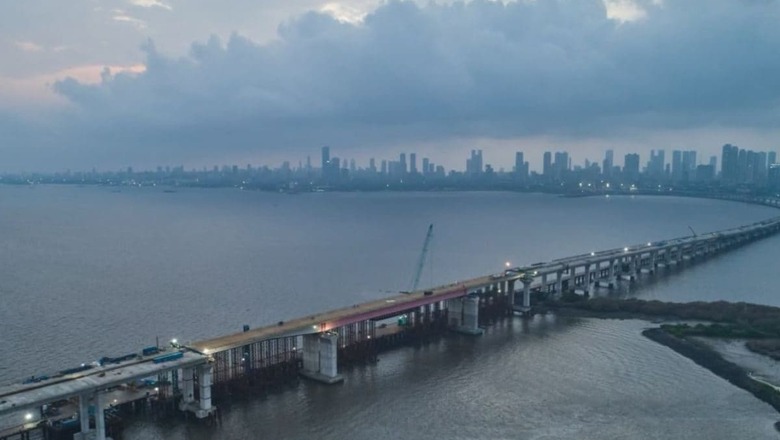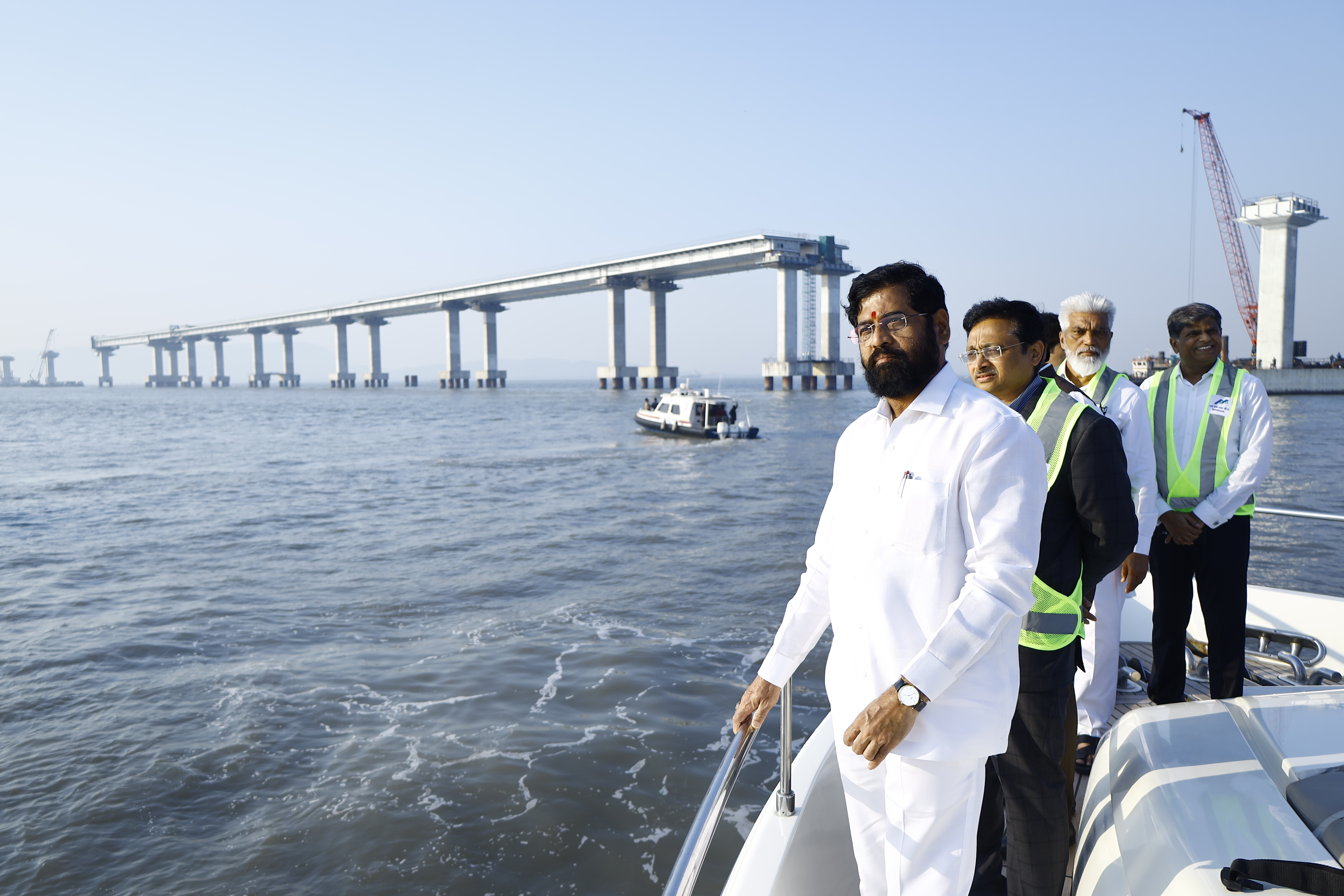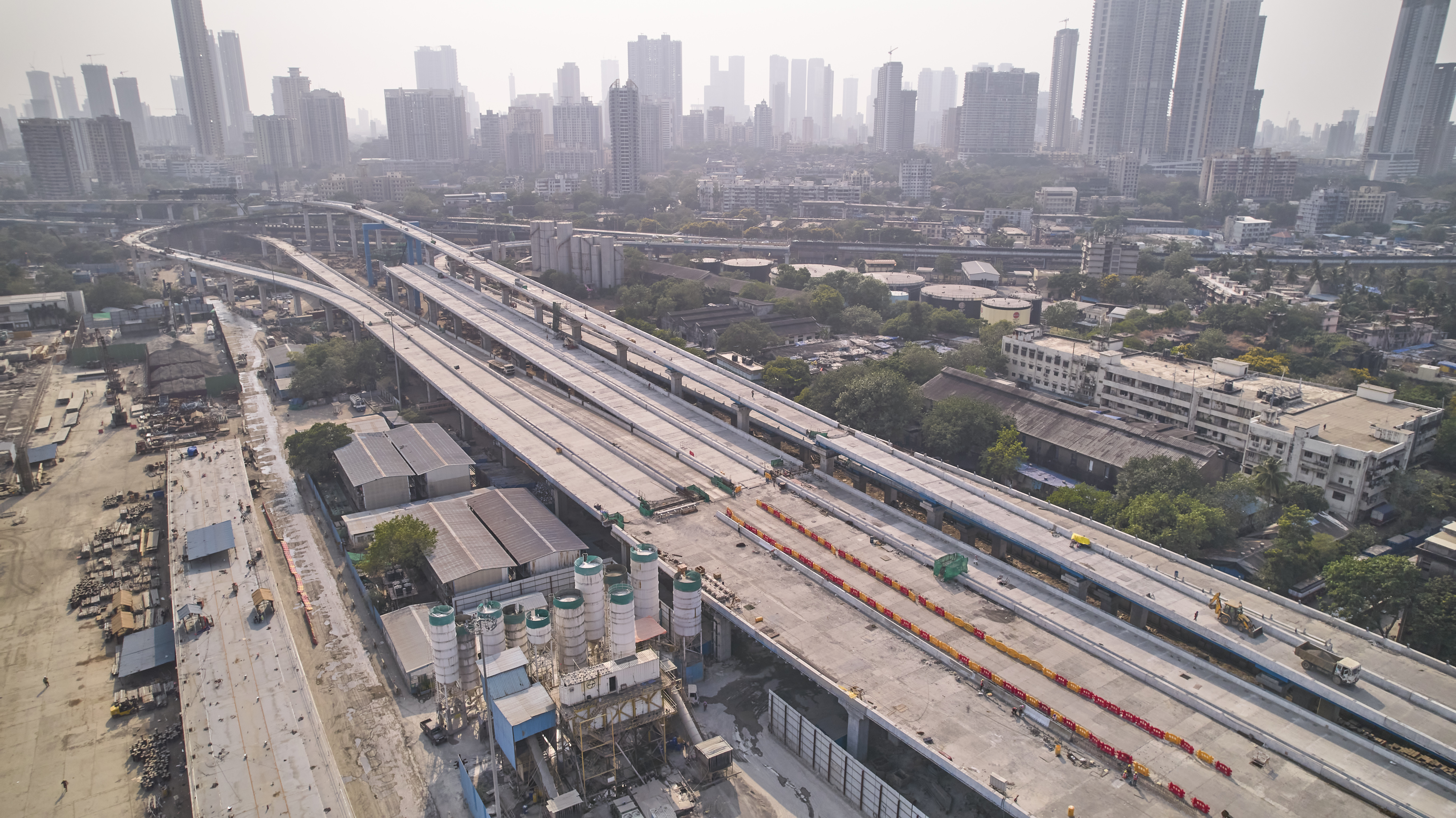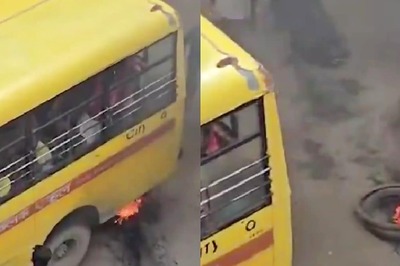
views
Maximum City Mumbai is always reshaping and aiding its development is the Mumbai Metropolitan Region Development Authority (MMRDA), which is not only constructing a web of metro rails in the city but also connecting Mumbai with Navi Mumbai via the Mumbai Trans Harbour Link (MTHL).
The 22-kilometer-long engineering marvel will significantly reduce the travel time between the mainland and the island city to just 20-25 minutes.
“Mumbai is transforming and not just upgrading. We have completed 90 per cent work of MTHL and we are hopeful that by the year-end, we will open it to the public. This will be one of the most iconic projects in Asia as the sea bridge is 22 kilometers long," said SVR Srinivas, commissioner of MMRDA, which is the head agency for the project.
According to Srinivas, MTHL is not just another sea link that will reduce the distance between Mumbai and Navi Mumbai but it will also get more land to Mumbai city. “Mumbai is an island city known for South-North commute and transportation. But with MTHL, East-West connectivity will improve which will help get labour and raw material from Navi Mumbai to Mumbai city quickly and save overall cost."

The main concern for the authorities was traffic in Mumbai city, especially in south Mumbai in the peak morning and evening hours. However, Srinivas is of the opinion that “daily, 70,000-75,000 vehicles may add to the traffic coming to south Mumbai from Navi Mumbai". “To tackle this, we are joining MTHL with the freeway, the eastern expressway and further to the western suburbs. In the coming few years, the Bandra end of the Worli Sea Link will be connected to MTHL which will reduce traffic congestion," he said.
He added: “This will have a huge impact on the economic growth of Mumbai city. Due to this bridge, the entire south Mumbai will get transformed in the coming days. The push which the redevelopment projects of south Mumbai require will get a boost with this bridge coming up in the vicinity."
Constructing this huge bridge was not an easy task for MMRDA. When Covid-19 hit, the shortage of labourers was also a major roadblock along with the challenge of training them to deal with new technology in a short time span. “We had experienced that labourers were falling sick due to the sea climate. The Mumbai Monsoon was another challenge we faced while working on the project."

The site where MTHL was planned to be constructed earlier was opposed by local fishermen. Several environmentalists had also raised concerns about the migration of Serbian flamingos. However, these issues were resolved by MMRDA on priority.
“These kind of huge projects create a lot of turbulence but we have used technology that reduces this turbulence. It is called reverse circulation drilling technology which minimises noise substantially and doesn’t bother the migration of flamingos. We also dropped the idea of a cable bridge as it would have obstructed the path of these birds. To settle the issues of fishermen, MMRDA till date has spent more than Rs 117 crore as compensation," said Srinivas.
For the construction of the MTHL bridge, a new technology called Orthotropic Steel Deck has been used which enables a distance up to three times longer than the norm between two piers and is used in stretches that are navigational channels for large ships. MMRDA has not yet revealed the toll it will be charging for vehicles to use this bridge.
Read all the Latest India News here




















Comments
0 comment